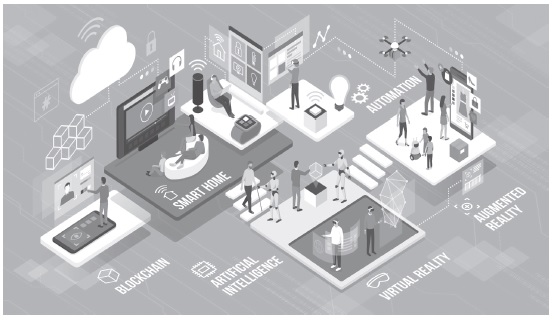11 June 2020 | Posted by Equipo Editorial de PhD
Tesi doctoral Sr. Víctor Caballero Codina
New Challenges on Web Architectures for the Homogenization of the Heterogeneity of Smart Objects in the Internet of Things

This thesis deals with two novel Internet of Things (IoT) technologies and their integration to the field of the Smart Grid (SG); these technologies are the Web of Things (WoT) and the Social Internet of Things (SIoT). The WoT is an enabling technology expected to provide a scalable and interoperable environment to the IoT using the existing web infrastructure, web protocols and the semantic web. The SIoT is expected to expand further and contribute to scalability and discoverability challenges by creating a social network of agents (objects and humans). When exploring the synergy between those technologies, we aim at providing practical and empirical evidence, usually in the form of prototype implementations and empirical experimentation.
In relation to the WoT and SG, we create a prototype for the Web of Energy (WoE), that aims at addressing challenges present in the SG domain. The prototype is capable of providing interoperability and homogeneity among diverse protocols. The implementation design is based on the Actor Model, which also provides scalability in regards to the prototype. Experimentation shows that the prototype can handle the transmission of messages for time-critical SG applications.
We also take another similar research direction less focused on the SG, but for a broader range of application domains. We integrate the description of flows of execution as Finite-State Machines (FSMs) using web ontologies (Resource Description Framework (RDF)) and WoT methodologies (actions are performed on the basis of calls Hyper Text Transfer Protocol/ Secure (HTTP/S) to a Uniform Resource Locator (URL)). This execution flow, which can also be a template to allow flexible configuration at runtime, is deployed and interpreted as (and through) a Virtual Object (VO). The template aims to be reusable and shareable among multiple IoT deployments within the same application domain. Due to the technologies used, the solution is not suitable for time-critical applications. Nevertheless, it is suitable for non-time-critical applications that require the deployment of similar VOs.
Finally, we focus on another technology aimed at improving scalability and discoverability in IoT. The SIoT is emerging as a new IoT structure that links nodes through meaningful relationships. These relationships aim at improving discoverability; consequently, improving the scalability of an IoT network. We apply this new paradigm to optimize energy management at the demand side in a SG. Our objective is to harness the features of the SIoT to aid in the creation of Prosumer Community Group (PCG) (groups of energy users that consume or produce energy) with the same Demand Side Management (DSM) goal. We refer to the synergy between SIoT and SG as Social Internet of Energy (SIoE). Therefore, with the SIoE and focusing on a specific challenge, we set the conceptual basis for the integration between SIoT and SG. Initial experiments show promising results and pave the way for further research and evaluation of the proposal.
We conclude that the WoT and the SIoT are two complementary paradigms that nourish the evolution of the next generation IoT. The next generation IoT is expected to be a pervasive Multi-Agent System (MAS). Some researchers are already pointing at the Web and its technologies (e.g. Semantic Web, HTTP/S) — and more concretely at the WoT — as the environment nourishing the agents. The SIoT can enhance both the environment and the relationships between agents in this fusion. As a specific field of the IoT, the SG can also benefit from IoT advancements.

You can watch the thesis in the following link: https://www.youtube.com/watch?v=PI3YFCdtmLM